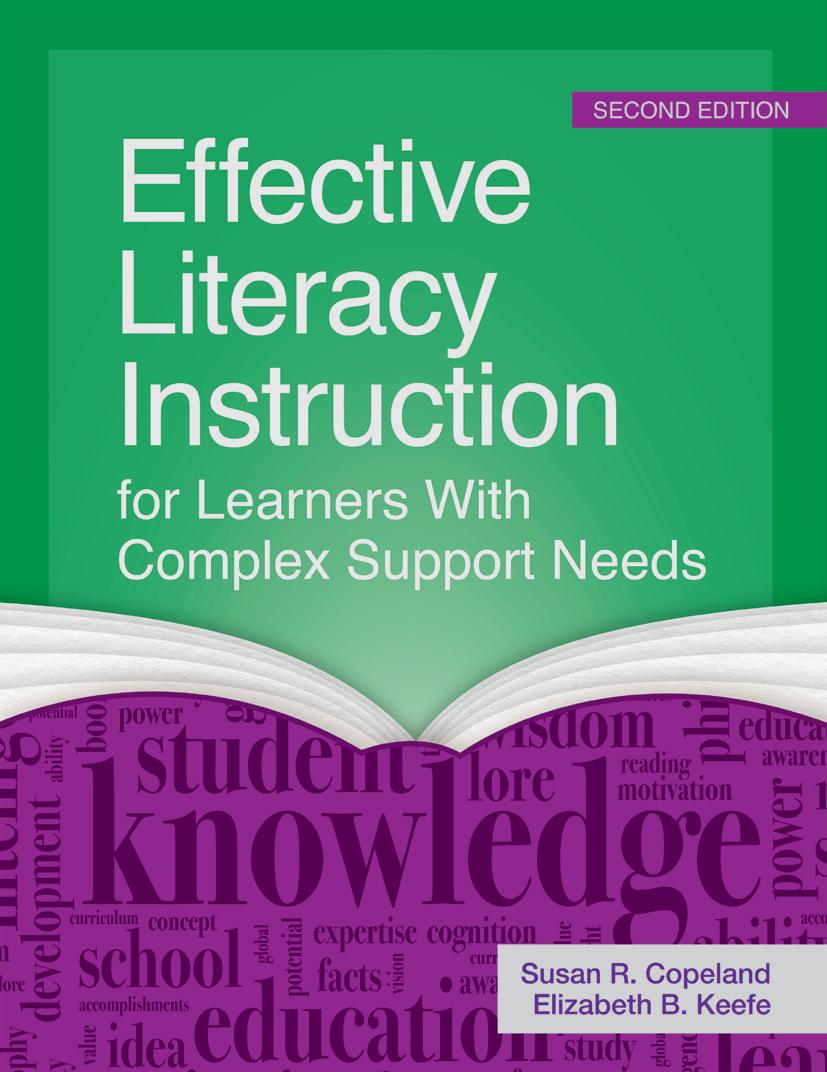
2 minute read
Multisyllabic Word Reading



ORDER EXAM COPY

CONTENTS
I. THE FOUNDATIONS OF LITERACY AS
A HUMAN RIGHT 1. Literacy for All 2. Developing Language and Communication 3. Addressing Cultural and Linguistic Diversity in
Language and Literacy Instruction 4. Inclusive Literacy Instruction: State and National
Standards and Beyond 5. Creating Accessible, Rich and Engaging Literacy
Environments II. EVIDENCE-BASED COMPREHENSIVE LITERACY
INSTRUCTION 6. Getting the Point: Comprehension Instruction 7. A Broader Approach to Fluency 8. Words, Glorious Words! 9. What’s the Word? Word Recognition Instruction 10. Conveying Your Message: Writing Instruction 11. Organizing Effective Literacy Instruction:
A Framework for Planning III. CREATING OPPORTUNITY AND ACCESS TO
LITERACY IN SCHOOL AND BEYOND 12. Adapting Books and Other Literacy Genres 13. Beyond the Common Core: Art, Music, And
Creativity in Literacy Learning 14. Literacy Beyond High School 15. Where Do We Go from Here?
Effective Literacy Instruction for Learners with Complex Support Needs
Second Edition
Edited by Susan R. Copeland, Ph.D., BCBAD (University of New Mexico), & Elizabeth B. Keefe, Ph.D. (University of New Mexico)
What are today’s best methods for teaching literacy skills to students with complex support needs—including autism, intellectual disability, and multiple disabilities? This comprehensive guidebook has up-todate, evidence-based answers for pre- and in-service educators.
Developed by Copeland and Keefe, the experts behind the landmark book Effective Literacy Instruction for Students with Moderate or Severe Disabilities, this thoroughly reimagined follow-up reflects 10 years of ground-breaking research and advances in the field. You’ll discover current recommended practices on critical topics, including how to build vocabulary, increase word recognition, enhance fluency, address cultural and linguistic diversity, and use academic standards when designing instruction. You’ll also get the guidance you need to put theory into practice: lesson planning strategies, practical examples, and case studies that bring key principles of instruction to life.
Whether used as a text for teachers in training or a guide for practicing educators, this book will help teachers of Grades K–12 increase access to literacy and prepare all learners for successful communication, employment, and community life.
IN THIS EDITION: • New section on literacy as a human right for all learners (the
“why” of instruction) • Chapters on how to design engaging learning environments • Cutting-edge guidance on today’s assistive technology and augmentative and alternative communication • A dedicated chapter on how to use national and state standards in designing instruction • Recommendations for adapting books and other materials to increase all learners’ access • Chapters on combining literacy and the arts to enhance student engagement • More on literacy beyond high school, including community-based learning opportunities




